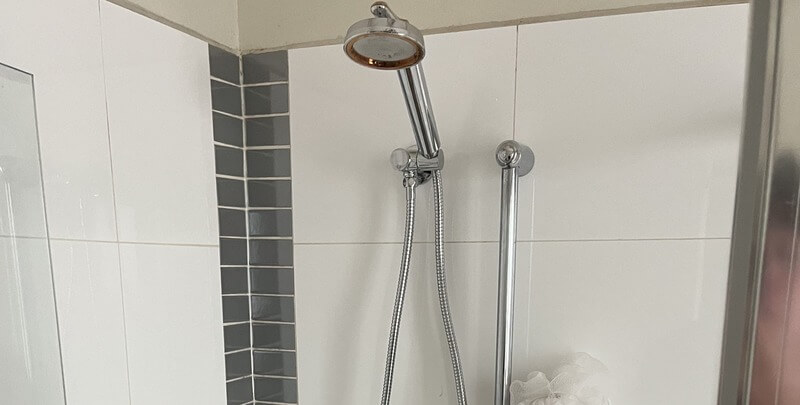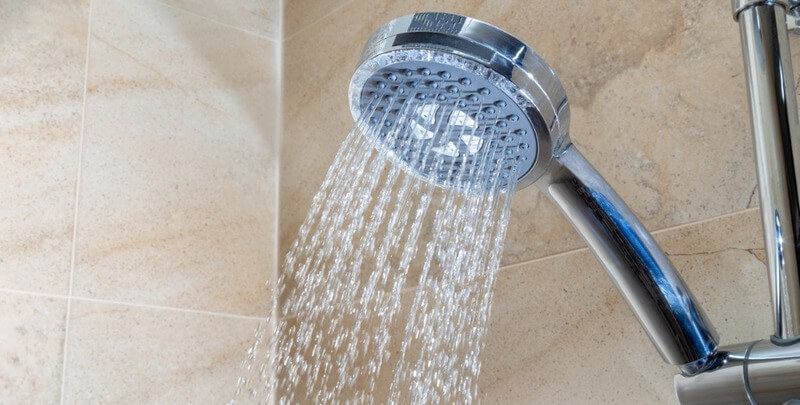
What You Need to Know About Cleaning Your Shower Head
In the pursuit of immaculate living spaces and bathroom hygiene, one item that is often overlooked is the humble shower head.
The shower head is the unsung hero of our daily hygiene routine, and it requires careful and regular attention to perform at its best. This article highlights the essentials of shower fixture upkeep.
So, let’s take the first steps on the path to enhancing your shower experience.
The Importance of Regular Cleaning
The purifying water flow from the shower head is a crucial part of any morning ritual. However, we tend to neglect regular maintenance of such a well-used item.
Notoriously ignored, this fixture can become a breeding ground for unwelcome microscopic invaders. This applies equally to fixed and hand-held shower heads. Remember that negligence breeds bacterial colonies and calcium and mineral deposits accumulate quite quickly.
These potential problems may compromise your hygiene and, consequently, your overall well-being. It is possible that your shower fixture is making you sick.
Some examples of bacteria potentially found in your shower head include:
- Legionella bacteria – this can cause Legionnaires’ disease.
- Pseudomonas aeruginosa – this can trigger ear and eye infections.
- Mycobacterium avium subspecies paratuberculosis – linked to digestive conditions, including Crohn’s disease.
How do you know your shower is becoming a potential hygiene problem? First of all, let’s consider some of the dangers of not cleaning your shower head.
The Dangers of a Dirty Shower Head
A dirty shower head poses several dangers that can impact your health and overall shower experience. One of the primary risks is bacterial contamination.
Over time, bacteria can accumulate on the surface of a neglected shower head, leading to potential infections and illnesses. This is especially concerning for individuals with weakened immune systems or respiratory conditions.
Another danger of a dirty shower head is reduced water efficiency and waste. Mineral deposits and debris build-up can clog the tiny nozzles, resulting in decreased water pressure and uneven water flow. This applies as much to a water saving shower head as a standard model.
As a result, you may spend more time in the shower trying to rinse off, wasting both water and energy.
Furthermore, a dirty shower head can adversely affect your skin and hair health. Bacteria, mould, and mineral deposits can irritate the skin, leading to dryness, itching, and even breakouts. Additionally, the mineral deposits may leave residue on your hair, making it look dull and lifeless.
To avoid these risks, regular cleaning and maintenance of your shower head are essential. By keeping it clean, you can enjoy a hygienic shower experience, improve water efficiency, and protect your health.
Here are some tell-tale signs to look out for.

Signs of a Dirty Shower Head
A dirty shower head can defeat the purpose of your shower experience. Regardless, most people don’t give a lot of thought to regularly cleaning this important item.
If you’re guilty of this, here are a few signs that your shower head is overdue for a good scrub:
- Water pressure has gotten weaker
- Shower seems to be spraying unevenly
- Strange smells in your shower – this could be an unpleasant musty or earthy smell which indicates a build-up of mould or mildew
- Discoloured water coming out of the nozzle
- Visible build-up on your shower head
The final point is a real danger sign. If you see black, green or pink spots on the chrome finish on your shower fixture, it’s time to clean it to avoid potential health risks. Remember, mould and mildew thrive in damp environments like showers.
Let’s take a look at some simple steps to make sure you and your family are enjoying clean water and a refreshing shower experience.
Guidelines for Shower Head Cleaning
Shower head cleaning is not an intricate process. However, if you’re unsure about proceeding, don’t hesitate to contact a fully qualified plumber to take care of it for you.
However, for those eager to get the job done independently, here are some tools, cleaning agents and other items you will need:
- Distilled white vinegar or cleaning vinegar
- Cleaning cloth
- Deep bowl or bucket
- Old toothbrush
- Wrench or lockable pliers
- Needle-nose pliers
Here are some simple steps to guide you in the cleaning process:
- Remove the shower head from its fixture using the wrench or lockable pliers.
- Submerge the disassembled shower head in a concoction of vinegar and warm water.
- Allow the shower head to rest in the cleansing solution for an appropriate duration, typically spanning a few hours.
- Post-soak, use an old toothbrush to gently remove any stubborn residue.
- Use a toothpick or paper clip to unclog any nozzles that still look blocked.
- Rinse thoroughly with hot water and reattach it to its fixture.
To clean the filter screen, consult the instructional manual (no need to panic if you don’t have that document, you can usually find it online). The filter screen is in the part of the shower fixture that connects to the pipe. Remove it using the needle-nose pliers and soak it in the bowl of vinegar and water.
It’s recommended to clean your shower head at least once a month. Why not put a reminder on your phone to do this often-forgotten job?
Remember, these steps are merely guidelines. For more complex problems, or showers exhibiting stubborn mineral encrustations, professional intervention may be warranted.

Prevention and Maintenance
Prevention and maintenance play crucial roles in keeping your shower head clean and functioning optimally. Here are some important tips to consider:
Firstly, using a shower head filter can be highly beneficial. These filters help to reduce mineral deposits, chlorine, and other impurities in the water, preventing them from accumulating on your shower head.
Establishing a regular cleaning schedule is also essential. Aim to clean your shower head at least once every few months, or more frequently if you have hard water or notice signs of build-up. This proactive approach will prevent stubborn deposits from forming and maintain good water flow.
Proper ventilation is another key aspect. After showering, ensure the bathroom is well-ventilated to allow moisture to dissipate. Excessive moisture can contribute to mould and mildew growth on the shower head.
Lastly, consider drying your shower head after each use. Simply wiping it down with a clean cloth or towel can help remove excess moisture and prevent mineral deposits from forming.
It’s also beneficial to use a water saving shower head to conserve water.
By implementing these preventive measures and incorporating regular maintenance into your routine, you can prolong the lifespan of your shower head and enjoy clean, refreshing showers every time.
Ensuring Your Shower Head’s Longevity
The longevity of this fixture is important – it’s an investment worth protecting. Consequently, routine cleaning shouldn’t be your only focus. Instead, envisage a comprehensive maintenance regimen, one that incorporates preventative measures to avoid potential issues.
This approach will ensure your shower head remains a beacon of cleanliness and efficiency.
- Regular inspection for visible irregularities.
- Immediate rectification of any detected leaks.
- Replace it when it becomes outdated or dysfunctional.
Do remember, even the most diligent homeowners can overlook subtle problems. Therefore, it’s beneficial to schedule regular servicing with a plumbing professional.

Keeping It Clean
Keeping your shower fixture clean, while seemingly mundane, plays a pivotal role in preserving hygiene and well-being. The process, if approached with the right understanding and resources, needn’t be an arduous task. Instead, let it be an empowering venture in creating a healthier home environment.
With the right balance of DIY enthusiasm and professional advice, you can ensure that your shower head remains a clean and reliable companion in your daily hygiene rituals.
Remember, in the pursuit of cleanliness, every drop from the shower head matters. So, don’t let yours be a cascade of unwelcome contaminants. Start today, for a cleaner and healthier tomorrow.
Please note: This information is provided for advice purposes only. Regulations differ from state to state, so please consult your local authorities or an industry professional before proceeding with any work. See our Terms & Conditions here.